By Kaitlyn Jacobs, Kevin Lino, and Michelle Bejder, Ph.D.
When an extensive spread of invasive octocoral was discovered along the bottom of Pearl Harbor in Hawaii, the U.S. Navy established a multi-agency task force to research and carry out the eradication effort in protection of the delicate island ecosystem.
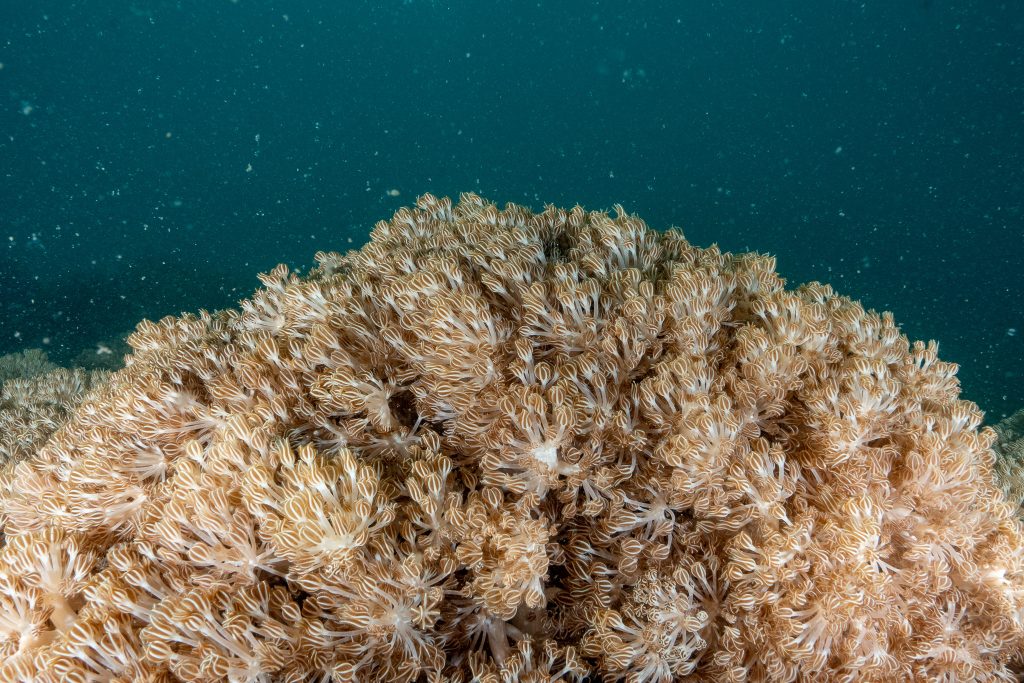
In 2020, the U.S. Navy discovered what was thought to be an isolated area in Pearl Harbor that housed an unknown octocoral. Following further investigation in 2023, the “isolated area” was discovered to actually spread across any hard bottom feature on the harbor floor for 80-acres. This confirmed beliefs that the octocoral had been growing, spreading, and invading the marine environment for much longer than just three years.
Aquatic invasive species are a primary, troublesome concern for marine resources managers because they have the capability to negatively alter food webs, affect hydrology and nutrient dynamics, and reduce native species richness and density. It is estimated that aquatic invasive species have cost the global economy $345 billion through resource damage, infrastructure impacts, and subsequent management. Oftentimes, once an invasive species is established, it takes over quickly and becomes near impossible to eradicate due to difficulties to spot and because removal techniques are complicated and expensive.
Given the preciousness of Hawaii’s marine ecosystem, however, and importance to the economy, the Navy moved forward with an extensive effort to remove this invasive species from Pearl Harbor.
Invasion Identification
Island ecosystems are at high risk to the devastating impacts of invasive species due to globalization and increased trade that increase the risk of introduction. Hawaii is no exception, termed the “extinction capital of the United States.” Natural resource managers in the state are still dealing with a variety of invasions from the early 1970s, including invasive marine algae, fish, and jellyfish. For more than 40 years, there has been a high emphasis on the early detection of aquatic invasive species to increase the chances of successfully removing it while still at relatively low manageable densities.
After discovering the true scale of the octocoral invasion, the Navy worked with partner marine biologists from the state, the Bishop Museum, and University of Hawaii to genetically identify it as Unomia stolonifera (“pulsing coral”), a popular aquarium species. This octocoral was severely destructive when it was illegally introduced in waters off the coast of Venezuela. Worse yet, later surveys and genetic analysis confirmed that a second octocoral was present in Pearl Harbor as well: another popular aquarium species, Capnella spicata (“Kenya Tree coral”).
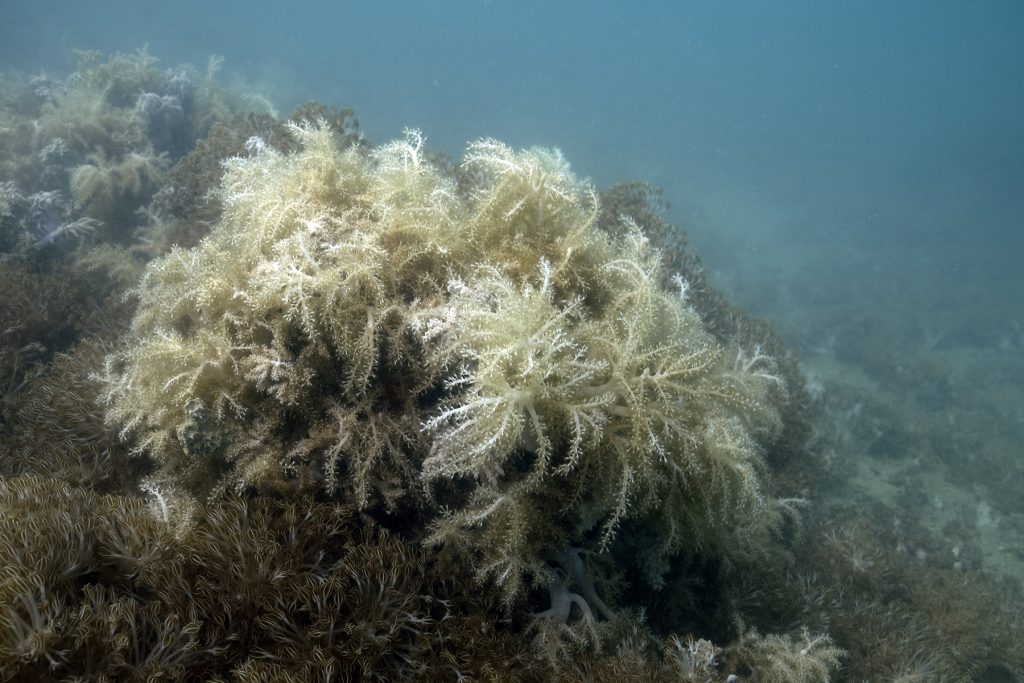
Given the radiating distribution of both invasive species within proximity to a common access fishing area and the detection of a common aquarium trade reef fish (Apolemichthys xanthopunctatus, “Gold Flake Angelfish”), it is almost certain this issue stems from an illegal aquarium release. In Hawaii, it is against the law to have certain common aquarium species. Unfortunately, these species were released rather than turned over to appropriate agencies. The general public can anonymously surrender such illegal species without any impacts or consequences.
The Navy is also implementing other innovative techniques, including sending down dive teams to manually wrap pier piles with plastic wrap and smother the invasive octocorals growing on the surface of the piles.
Both species are native to the Indo-Pacific, with U. stolonifera first identified in Indonesia but also found in Japan and Taiwan. In Venezuela, the current invasion covers an extensive area—overgrowing much of the native fauna to up to 100 percent of bottom composition in many areas, and it is spreading east into the Caribbean Sea. U. stolonifera was identified recently in Cuba and presumed to have been introduced from Venezuela, further demonstrating an ability to survive in and colonize new habitats. C. spicata’s known range is currently Tasmania and other coastal parts of Australia into the Philippines, with presence likely in other areas of the Indo-Pacific. Because both of these octocorals are not native to the Hawaiian Islands, they possess no known natural predators, which gives them increased potential to reproduce and spread quickly while replacing slow-growing, reef-building, hard corals that are native to the ecosystem.
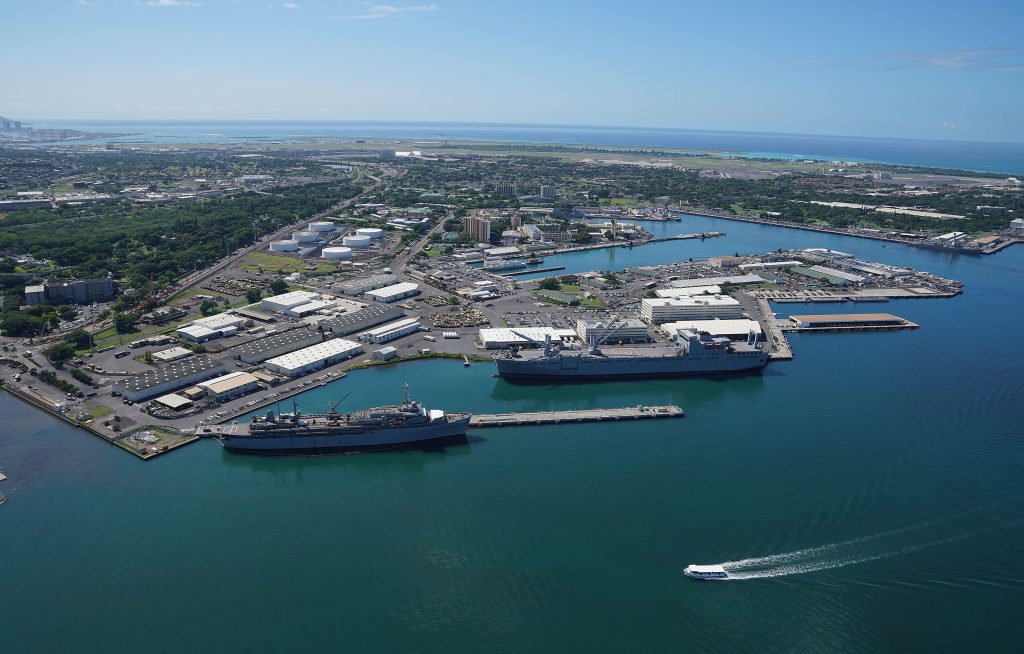
The limited scientific research on these species is partly due to the difficulty in species identification based on morphology alone, changes in the taxonomy, and creation of new genuses. In general, invertebrates are notoriously efficient at adapting morphologically without any hereditary changes. Genetic studies were required to determine, with confidence, which octocorals were present in Pearl Harbor. Consequently, the potential for the octocorals to cause state-wide reef ecosystem collapse became the primary focus of many of the Navy researchers and marine resource managers.
Eradication Efforts
Because the issue was larger than expected, the Navy has been collaborating on this eradication effort in a multi-agency taskforce led by the Coordinating Group on Alien Pest Species. Comprised of both government agencies and non-governmental organizations, the partnership is working collaboratively to protect Hawaii from invasive species. Through this partnership, a working group was formed specifically to address the octocorals, with marine biologists from the U.S. National Marine Fisheries Service, U.S. Fish & Wildlife Service, U.S. Geological Survey, State of Hawaii, University of Hawaii, Bishop Museum, and Williams College.
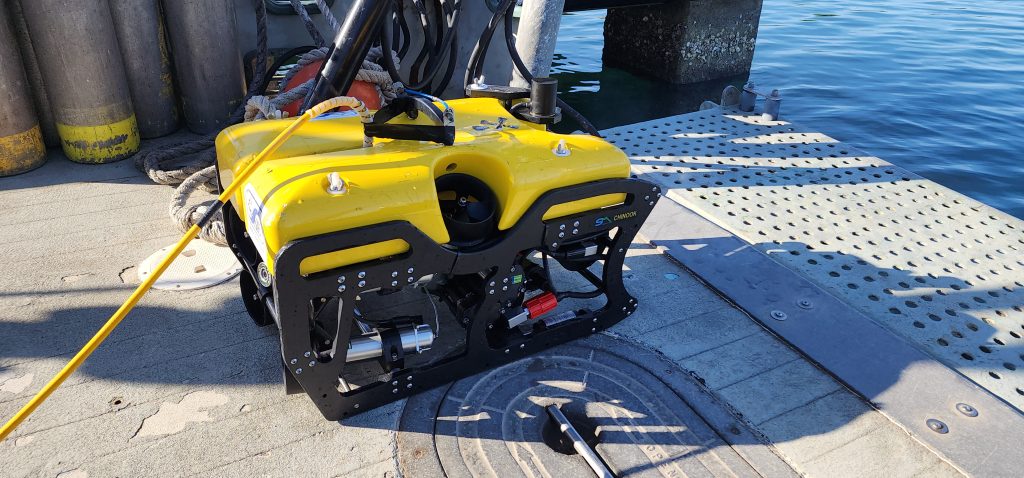
This newly developed coalition, the Hawaii Invasive Octocorals Working Group, since early 2023, has been joining resources and expertise to evaluate and determine the most efficient eradication methods for the octocorals. For example, an outbreak of corallimorph currently exists on Palmyra Atoll; an effective eradication method used there has been to smother the corallimorphs using tarps, sandbags, and bleach to essentially starve the organisms from oxygen, causing decomposition. Based on that study, the Navy is adapting a similar methodology for Pearl Harbor, using specialized tarp material to smother them and specific collection bags to prevent any accidental release of octocoral fragments. The Navy is also implementing other innovative techniques, including sending down dive teams to manually wrap pier piles with plastic wrap and smother the invasive octocorals growing on the surface of the piles.
Concurrent with the field eradication and planning, researchers are testing alternative methods of mortality to prevent further spread through gear and vessels. In the laboratory, the octocorals were subjected to fresh water and air exposure independently, resulting in recommendations to ensure death. The combination of in situ and laboratory trials is an adaptive management approach to eradicate the octocoral before it spreads wider while avoiding bringing in any further aquatic invasive species to the area.
Protecting an Ecosystem
Eradicating invasive species is critical. Any change to the natural marine ecosystems could devastate the level of food security in Hawaii and shatter the Native Hawaiian fishing traditions and sustenance capacity. Furthermore, millions of people travel to experience the unique coral reefs. If the octocorals were to invade the fragile reefs, they will eventually grow over every hard coral upon which the entire coastal marine ecosystem depends. Reef fish would struggle to find food. The octopuses, snails, or multitudes of crustaceans that provide an ecological foundation for the endangered Hawaiian monk seal and sea turtles would have no home or shelter. The direct, downstream effects could devastate the local economy, sustenance, and coastal storm protection for beaches and shorelines. Ultimately, without any control, an entire ecosystem collapse likely would be imminent with far-ranging impacts.
The Navy is entrusted to be good stewards of the environment, both on land and at sea. Eradicating these invasive species in Pearl Harbor will protect Hawaii’s precious marine ecosystem, creating an opportunity for the service to spearhead what would be an unprecedented engineering, scientific, and conservation success.
Kaitlyn Jacobs and Michelle Bejder, Ph.D., are Natural Resources Management Specialists for Marine Resources, and Kevin Lino is Marine Biologist, NAVFAC Pacific. They can be reached at kaitlyn.p.jacobs.civ@us.navy.mil; kevin.c.lino.civ@us.navy.mil; and michelle.m.bejder.civ@us.navy.mil.
More News from TME
-
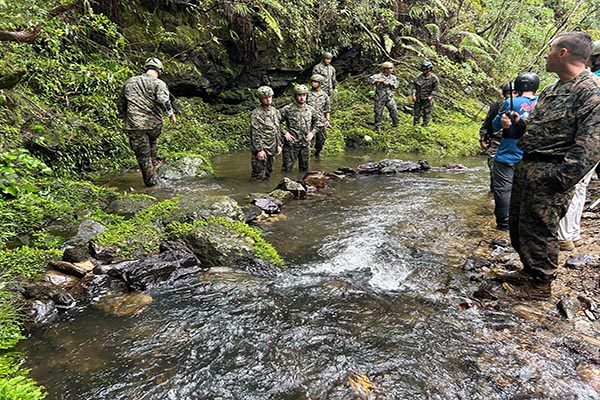
Deploying Renewable Generation Through Small-Scale Hydropower
A field demonstration and ongoing investigation of modular hydrokinetic turbines by the U.S. Army Engineer Research & Development Center’s Construction Engineering Research Laboratory illustrates the potential applicability for using the technology on military deployments. -

Rethinking Traditional Treatment Systems for PFAS Remediation
At two U.S. Air Force bases impacted by historical releases of aqueous film-forming foam, innovative methods in treating PFAS in both surface water and groundwater provide examples of success in safeguarding health for military personnel and nearby communities. -

Tackling Restoration Projects With Amphibious Excavators
When faced with soft and wet underfoot conditions, such as at a recent channel dewatering, excavation, and repair project for USACE Galveston District, amphibious excavators offer a scalable way to contour difficult site characteristics.